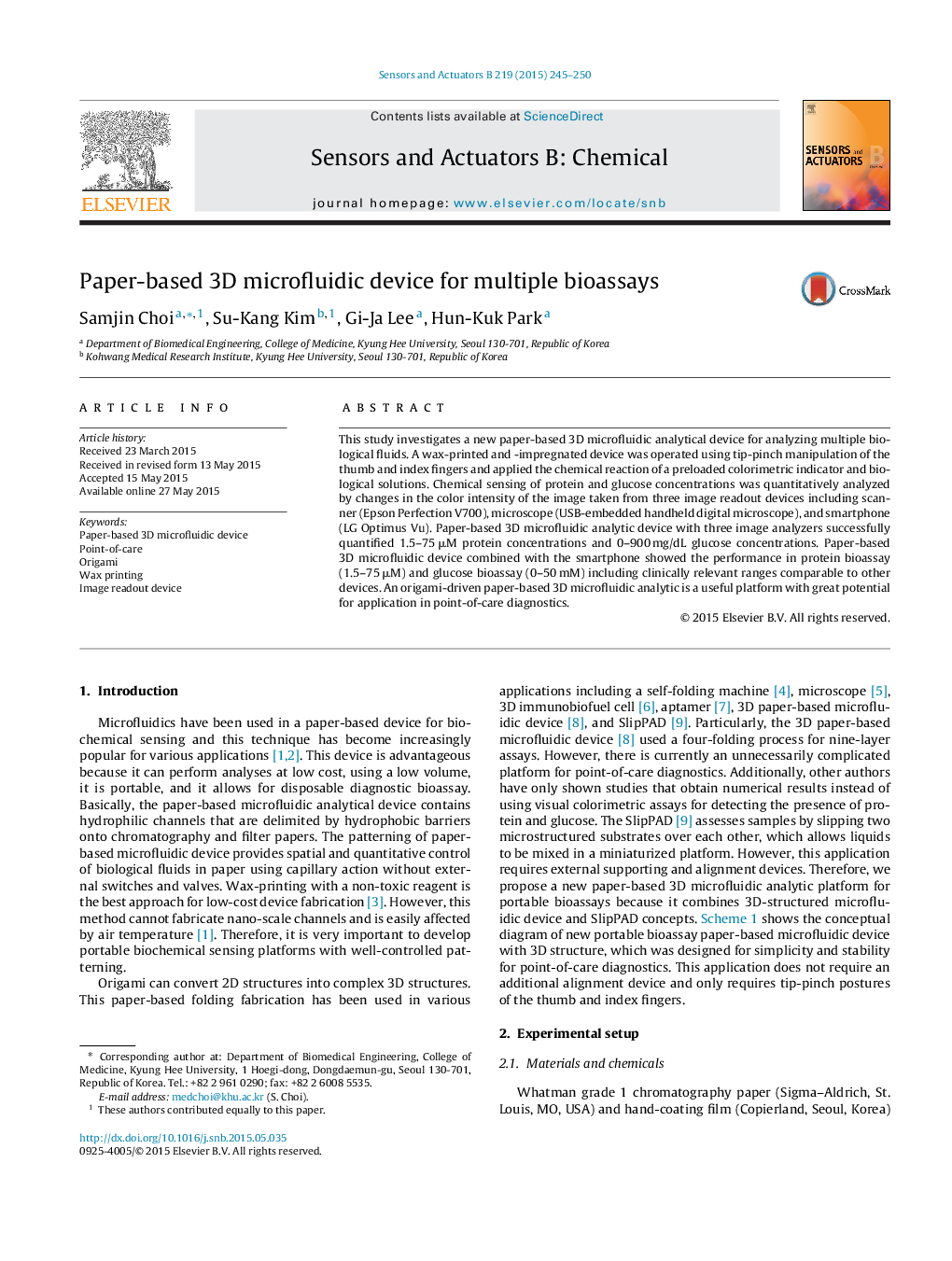| Article ID | Journal | Published Year | Pages | File Type |
|---|---|---|---|---|
| 741621 | Sensors and Actuators B: Chemical | 2015 | 6 Pages |
•The origami-driven μPAD platform was designed to be simple and stable for POC diagnostics.•No additional alignment devices are needed and it only requires tip-pinch postures by the thumb and index fingers.•This platform can quantify 1.5–75 μM BSA and 0–900 mg/dL glucose concentrations.•All readout devices showed a linear characteristic in clinically relevant ranges of protein and glucose bioassays.
This study investigates a new paper-based 3D microfluidic analytical device for analyzing multiple biological fluids. A wax-printed and -impregnated device was operated using tip-pinch manipulation of the thumb and index fingers and applied the chemical reaction of a preloaded colorimetric indicator and biological solutions. Chemical sensing of protein and glucose concentrations was quantitatively analyzed by changes in the color intensity of the image taken from three image readout devices including scanner (Epson Perfection V700), microscope (USB-embedded handheld digital microscope), and smartphone (LG Optimus Vu). Paper-based 3D microfluidic analytic device with three image analyzers successfully quantified 1.5–75 μM protein concentrations and 0–900 mg/dL glucose concentrations. Paper-based 3D microfluidic device combined with the smartphone showed the performance in protein bioassay (1.5–75 μM) and glucose bioassay (0–50 mM) including clinically relevant ranges comparable to other devices. An origami-driven paper-based 3D microfluidic analytic is a useful platform with great potential for application in point-of-care diagnostics.
Graphical abstractFigure optionsDownload full-size imageDownload as PowerPoint slide
